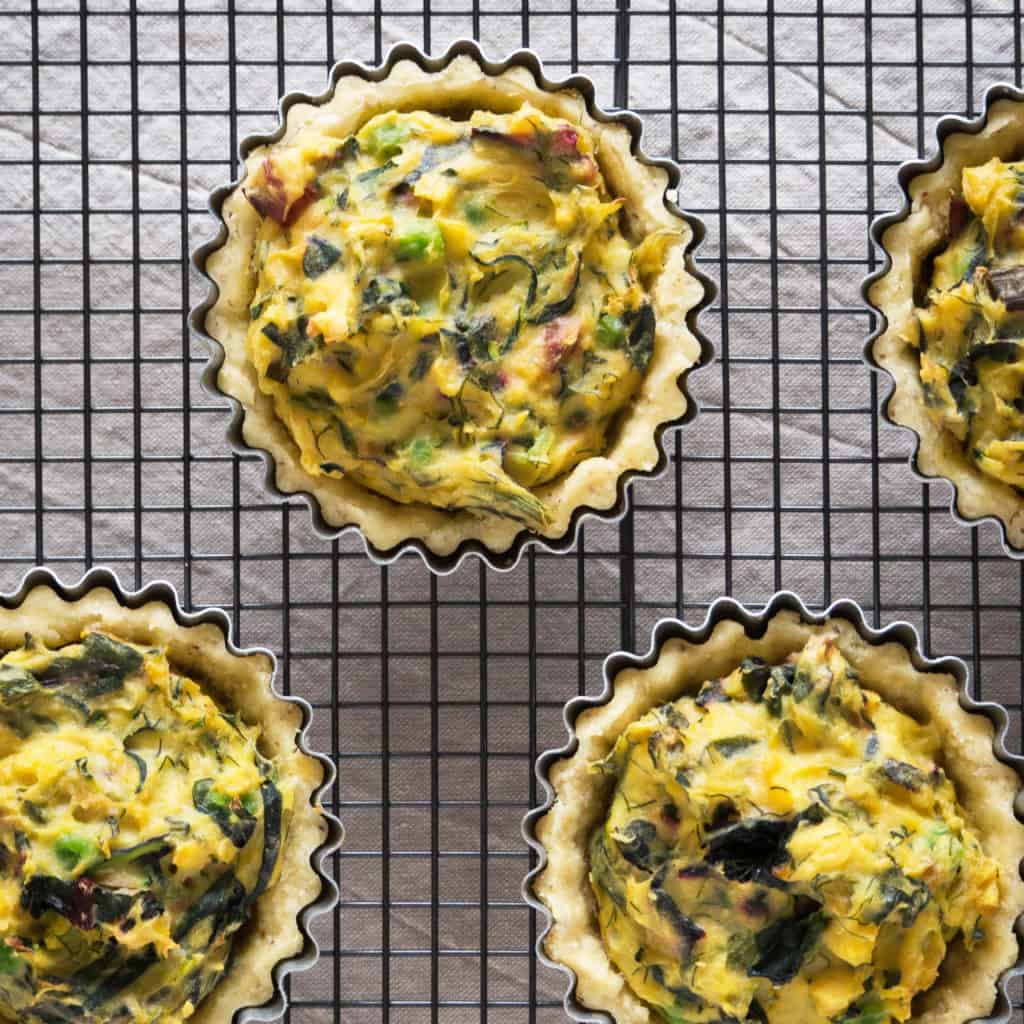
Chard, Courgette and Pea Tart is the epitome of summer: peas, courgette, dill and chard. No bacon or eggs in sight. This tart is fabulous picnic food. It is robust enough to handle being ferried around in a cool bag with a bottle of wine.
Chard, Courgette and Pea Tart is of medium difficultly – mostly because of the three different elements of the dish: tart case, vegetables and filling.
You can find the full Chard, Courgette and Pea Tart recipe here.
Chard, Courgette and Pea Tart is perfect for lunch, light dinner, picnic or barbeque. Serve with Radish and Cress Salad, Celeriac Caper and Rocket Salad or Asian Slaw with Cumin Aioli. All are great with these cute tarts.
Preparation
Difficulty medium
Preparation time 30 minutes
Cooking time 20 minutes
You can find the full Chard, Courgette and Pea Tart recipe here.
Allergens
Chard, Courgette and Pea Tart is gluten-free and vegan as well as…
Celery free
Coconut free
Garlic free
Lupin free
Mustard free
Nightshade free
Onion free
Peanut free
Sesame free
Soya free
Tree nut free
About
Chard (beta vulgaris subsp. vulgaris) AKA Swiss chard has large, floppy tender deep green leaves and thick, crisp stalks. Chard tastes similar to spinach but with a very slight bitterness. There are a number of types of chard with different colour stalks ranging from white to golden to deep red. There is minimal difference in taste between the different colours. It took me a while to work out that rainbow chard is lots of different colour stalks sold together.
Young chard leaves can be eaten as a salad leaf. Chard leaves and stalks tend to be cooked separately as they require a different cooking time. Chard is often sautéed where any bitterness fades with cooking. Resulting in a flavour which is earthy and deeper than spinach but not bitter or metallic tasting. Chard is often used in soup or in pastries.
A 100 gram serving of raw chard provides 19 kilo-calories and has rich content (> 19% RDA) of vitamins A, K, and C, with 122%, 1038%, and 50%, respectively, of the RDA. Raw chard also has significant content of vitamin E, magnesium, manganese, iron and potassium. Raw chard is low in carbohydrate, protein, fat and fibre. When chard is cooked by boiling the vitamin and mineral contents are reduced compared to raw chard, but still supply significant proportions of the RDA.
Courgette (AKA zucchini) belongs to the species cucurbita pepo. Courgette are a type of squash. Courgette range from dark to light green and there is a yellow variety too. Courgette can grow up to one metre in length but are normally harvested at 15-20 centimetres. Fully grown courgette are known as marrows.
Courgette can be eaten raw in salads but are more usually cooked. They have a very delicate flavour that lends itself to light cooking. Courgette do lend themselves to any type of cooking; frying, baking, steaming etc. The delicate flavour of courgette means it can be used in sweet and savoury cooking e.g. in cakes and sweet loaves such as lemon, courgette cake, courgette chocolate cake and carrot and courgette loaf.
Courgette flowers are often picked, stuffed, battered and deep fried. Flowers can also be baked, sautéed or used in soups.
Raw courgette contains approximately 17 kilo-calories per 100 g and contains significant quantities of folate, potassium and vitamin A.